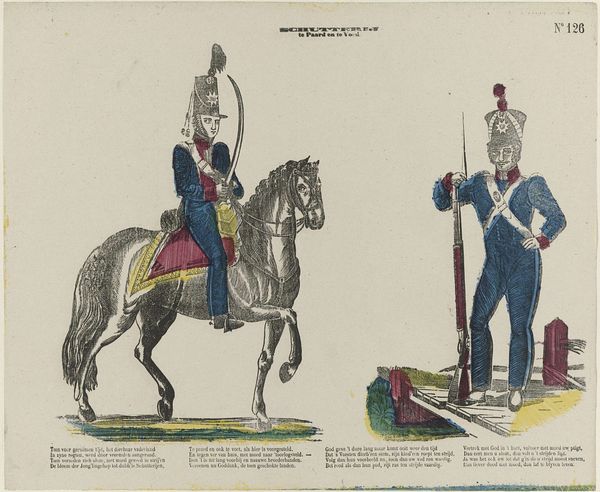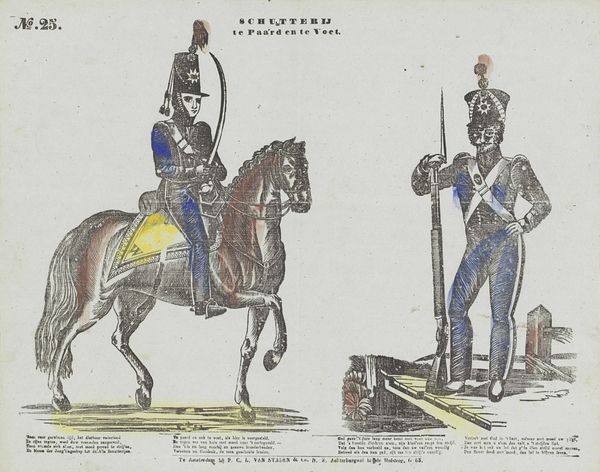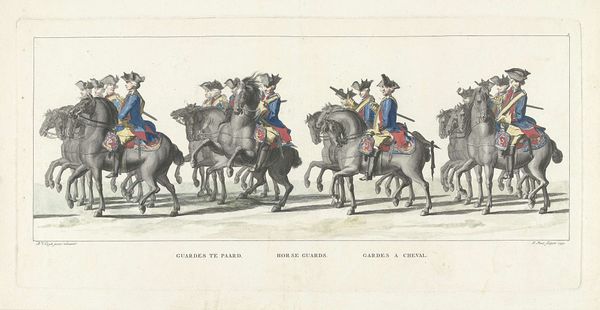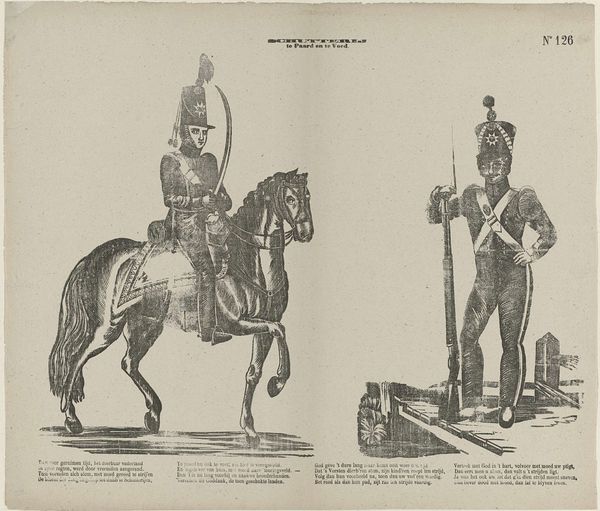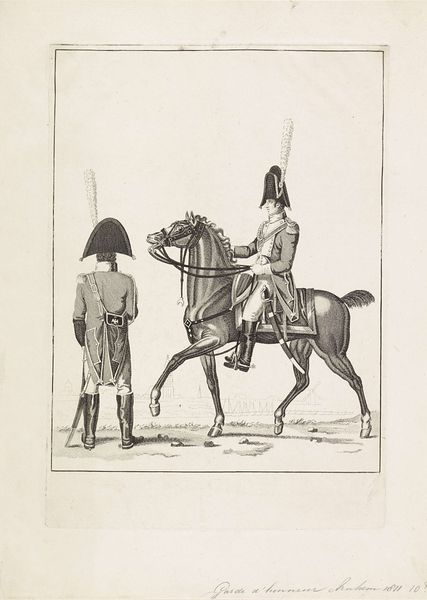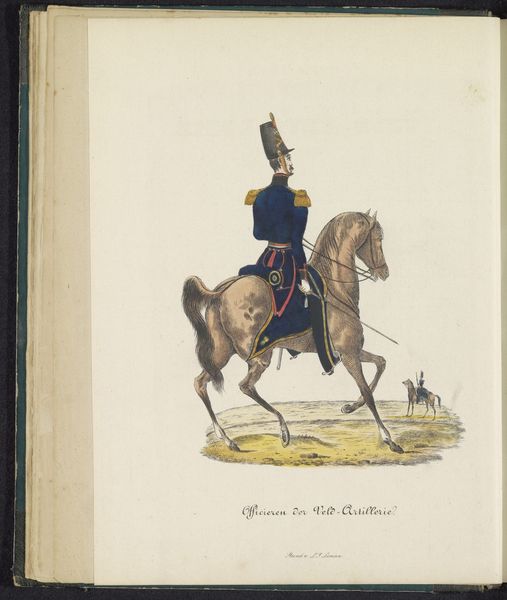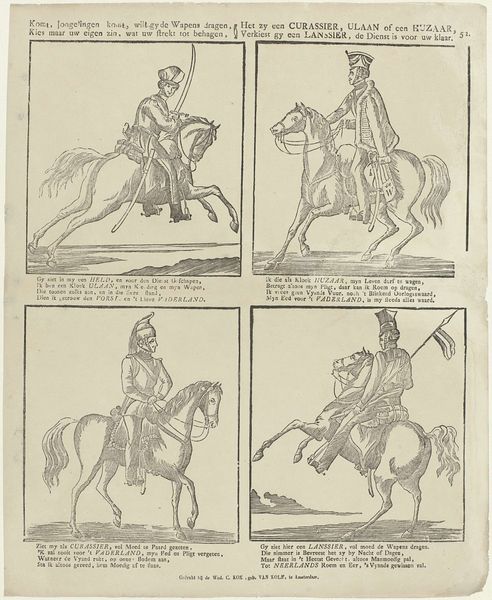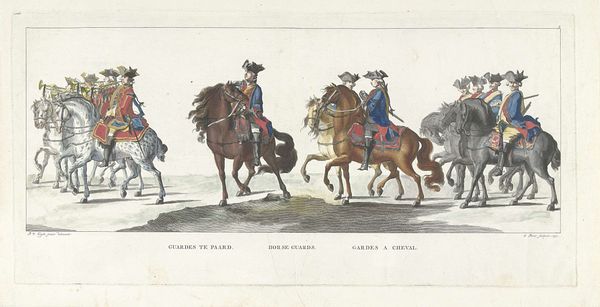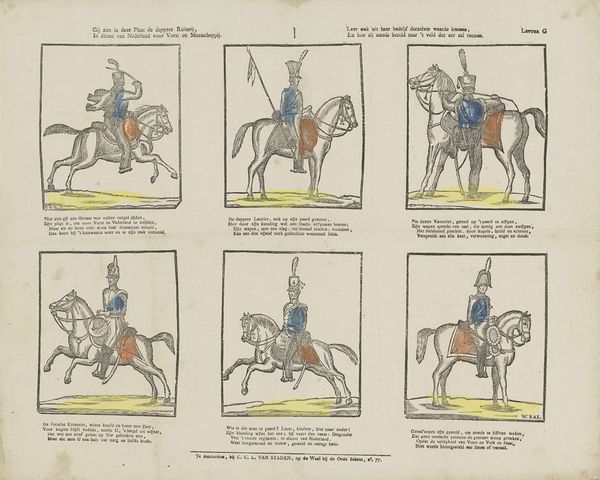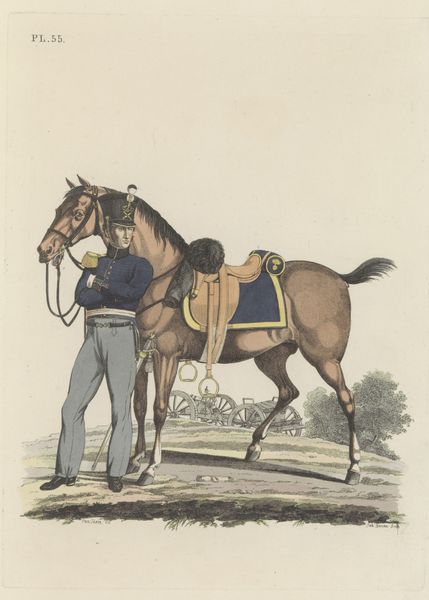
lithograph, print
#
lithograph
# print
#
figuration
#
genre-painting
Dimensions: height 319 mm, width 400 mm
Copyright: Rijks Museum: Open Domain
Jacob Coldewijn created this print titled "Schutterij / te paard en te voet" using etching, a method where lines are incised into a metal plate with acid, and then printed. Consider how the linear nature of etching defines the forms, from the soldiers' uniforms to the horses' manes. The etched lines create tone and texture, giving the image a sense of depth. Hand-coloring adds vibrancy, highlighting details. The mode of production informs the work. The printing press was an industrial marvel of its time, capable of replicating images efficiently. The subject relates to larger questions about the social function of art. The Schutterij were civic guard, and Coldewijn captured a sense of civic pride. This print served as a reminder of social order and the responsibilities of citizenship. By exploring the materials, processes, and social context, we appreciate how even a seemingly straightforward image reveals complex layers of meaning, questioning traditional distinctions between art and craft.
Comments
No comments
Be the first to comment and join the conversation on the ultimate creative platform.
